The Corded Petticoat Sewing Workbook
Historical Costuming… Starts with the Foundation
Detailed instructions on how to make a corded petticoat!
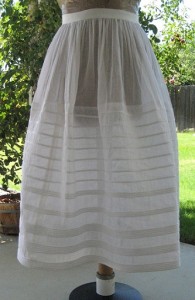
Anyone who’s done research on historical clothing has surely come across the garments that support the silhouette underneath those garments. This is especially true for the Romantic Era (1820s & 30s) and Early Victorian time (1837-1850s).
Corsets & chemises aside, you’ve probably uncovered the elusive undergarment – a petticoat full of cording to help support the skirts.
No doubt, you have your own thoughts about how this garment is made. But yes, it is basically cotton cording sewn into cotton or linen fabric. Not hard, huh?
But did you know there are two processes to make that happen? The original 1830s/40s corded petticoat below is made with both. Isn’t that cool?
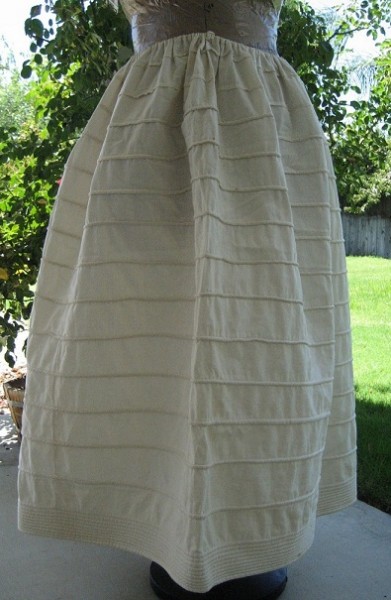
Now that you’re ready to make one of these foundational undergarments – no more guessing as to how they’re done! In this pattern workbook you’ll find the 2 methods to sewing a corded petticoat clearly presented with full color construction photos, written instructions and measurement examples.
It’s written all out so you only have to follow along!
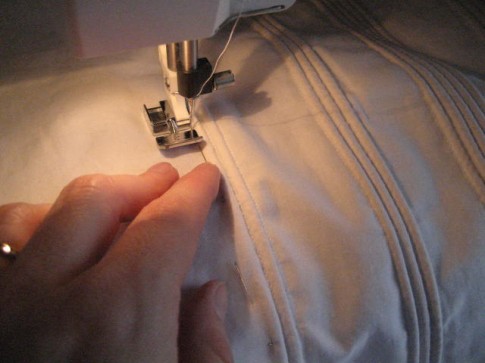
In this valuable handbook you’ll see how to produce the precise silhouette you’re dreaming of.
What you get in this detailed handbook:
- Modern fabrics you can use (pg. 4)
- The variety of cording options available (pg. 5)
- How far up you should sew the cording (pg. 9)
- The number of rows that will give you the support you need
- The good & bad about the two sewing methods (chapter 3)
- Helpful tips & tricks as you go along (chapter 4)
- How to avoid the vertical seam break in your finished petticoat (pg. 14)
- Balancing the cording rows to the hem
- To starch or not to starch your corded petticoat (with instructions on how if you want to) (chapter 7)
- A comparison of measurements from several surviving original corded petticoats specifically so you can adapt the information to your own project – No better way to make something like they did than copy their work exactly!
and much more!

A corded petticoat is perfect for supporting costumes for Dickens’ Fairs, Gold Rush & Alamo events – all based in the Romantic Era of fashion.
Don’t delay starting your petticoat! As easy as this garment is, it will eat up your sewing time. This project is best done over a few weeks so you don’t go crazy with straight stitching. 🙂
Before hoop skirts, women would purchase fabric with cords already woven in to make their petticoat (weren’t they lucky?). Or they would spend time hand sewing in dozens of rows of cording, rope, strips of linen, or wadding (scraps of raw wool) to stiffen a plain cotton or linen petticoat.
You don’t have to do that unless you want to. All the instructions here assume you are machine sewing. But if you want to make your petticoat close to authentic, you’ll want to hand sew everything.
This pattern workbook is the culmination of all my research & sewing of corded petticoats so you don’t have to! The trial & error for an easy to sew & supportive undergarment has been done already.
You deserve to not struggle with all the questions surrounding these obscure petticoats. And you’ll only need to make one if you do it right the first time.
Let’s work together, step-by-step with no more guesswork.
Warning: If after you sew a corded petticoat with these instructions and you fall in love with the loveliness your new garment – you might end up wearing it with no dress to cover it up!
Get your copy now & let’s get sewing!
Available as a digital PDF file for download through our Etsy Storefront.
All Historical Sewing products are covered with a 30-Day 100% Satisfaction Guarantee. If you are not completely satisfied and find no use for the product send us a quick email. For book returns, please follow the instructions on your packing list. For digital items we will refund your purchase price, no questions asked, within 48 hours. You can read our full terms here.

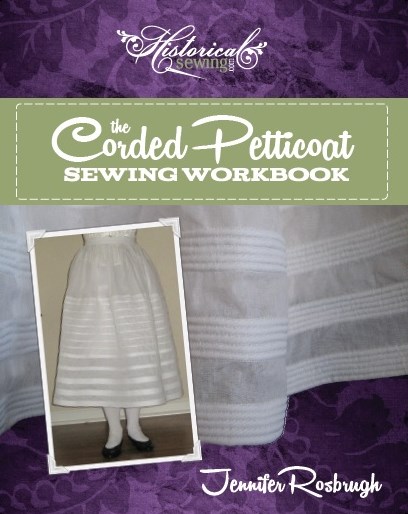
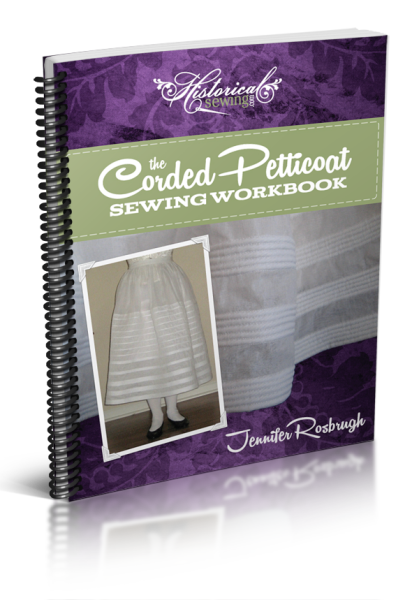
I’m very excited about this corded petticoat. I’ve made panniers using packing straps which obviously was wrong. I’m wondering if you think the corded petticoat would work for a renaissance Tudor English fitted gown? Under a Kirtle? Would it retain its shape?
I have very limited knowledge on clothing construction from that time, but I have seen people make similar petticoats with cords, like a farthingale. The 19th century corded petticoat falls soft and can have “divots” or wide folds when worn if the skirt width is very wide. Starching helps, but it doesn’t hold out like what wired hoop skirts would look like. You can read more on corded petticoats in this post.
What exactly is a pre-cage “crinoline petticoat”? I know it’s a petticoat made of a fabric called “crinoline,” which I have gathered includes horsehair and cotton, but that’s about as much as I know. What exactly is the fabric? Is it available today? How is the petticoat constructed? Is the finished product strong like a corded petticoat or more like organdy? Does it need starching? Would it be instead of, or in addition to, the corded petticoat? Also, thank you for the extremely informative site!
Crinoline fabric, as was known back in the 19th century, is exactly what you said: linen (lin) or cotton woven with real horsehair (crin). Today’s crinoline is generally plain cotton stiffened with a starching finish. It’s not the best material to make petticoats as it’s too stiff. “Horsehair” is also available today, but generally as a construction/interfacing supply and not as a textile to make garments from.
A corded petticoat gets its strength from the cords sewn in and not necessarily from the fabric. Organdy is a more modern substitution for petticoats as it’s light but stiff from the factory finish. Home starching helps to make petticoats stiff and hold up better. (Post here on starching.) If one didn’t have a corded petticoat (rare that they didn’t), a petticoat made from crinoline textile would be the next best thing for the skirt/silhouette support.
You can read more on corded petticoats in the 5 Questions post and here on when they changed to the hoop petticoat. Here’s a look at an original 1840s corded petticoat in my private collection.
Hello! I was wondering whether you could direct me to the surviving original petticoats that you took reference from? Did you go and see them in museums, maybe you could direct me to which ones so that I can look them up? Thanks so much.
Hi Lou,
A few are from my private collection, one of which you can read about in this post. I did lots of looking on various museum sites. You can find several shown on my Romantic Era Undergarments Pinterest board. Other original example measurements were mostly from work Carolann Schmitt of Genteel Arts did for an old Civil War reenactor’s message board, and I have no photos of those few petticoats.
Jennifer, can you put a video on how to make a corded petticoat to your sewing school, (I wanted for my 1860s first communion girl costume)
Thank you for the suggestion. I have had it in mind for a while now to put together a video class on a corded petticoat based on my workbook.
Do you have a workbook for the one with the yoke?
Not a separate one; I only have written this one workbook. I do mention using a yoke, though. And the two sewing methods I teach on the corded section will work on a yoke or waistband.
The link to buy doesn’t seem to be working.
Sorry about that! Here is the direct link to my Old Petticoat Shop for the Corded Petticoat Workbook.
A question, perhaps a silly one. I am planing on using this corded petticoat under the German Day Dress from Truly Victorian. I understand that for the period multiple petticoats is the correct answer. I thought I would do a lightly quilted one to go over the corded one. Should I make more then that? Do you have a similar series of directions for a quilted one that would be appropriate for the period? Should the petticoats be along the same lines, just without the cording?
Not a silly question! You do need multiple petticoats but only one corded. Just know that a quilted one will weigh the corded one down a little; sometimes only one of these was worn at a time. The top petticoats would be ruffled or plain with the most fancy one (with possible embroidered hem or ruffle) on the very top. For this period, I generally wear my corded plus a ruffled one then a plain one on top to smooth everything out. I unfortunately don’t have any directions for a quilted petticoat. I’ve made one from a bed quilt from Target though. 🙂 Although, my fabulous costuming friend and assistant, Gina, has a beautiful tutorial write-up on how she recently made her own quilted petticoat from scratch. Good luck with your petticoats!
los patrones son en pdf, yo soy de españa,
This workbook is in English but is available in PDF format. We can ship the printed workbook to Spain if you want that version.
Spanish: Este libro está en Inglés, pero está disponible en formato PDF. Podemos enviar el libro impreso a España si quieres esa versión.